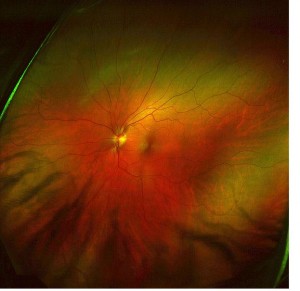FRIDAY, 15 JULY 2011
 Alzheimer’s disease is the most common form of dementia, affecting 820,000 people in the United Kingdom. Dementia often develops slowly and it is not always obvious in the early stages, but early diagnosis is important to allow patients to get the right help and treatments and to plan for the future [1] .
Alzheimer’s disease is the most common form of dementia, affecting 820,000 people in the United Kingdom. Dementia often develops slowly and it is not always obvious in the early stages, but early diagnosis is important to allow patients to get the right help and treatments and to plan for the future [1] .While most Alzheimer’s disease-related pathology occurs in the brain, the disease has also been shown to affect the eye. This is because the retina, the light-sensitive layer at the back of the eye, contains nerve cells that form a sensory extension of the brain, and Alzheimer’s related proteins can be also be found in normal human eyes [2]
Scientists from Australia photographed the retina in the eyes of healthy individuals and those suffering from Alzheimer’s, and found significant differences in the width of retinal blood vessels.
The eye is the only place in the body where vasculature or neuronal tissue is available for non-invasive imaging, so the finding, which was reported this month at the American Alzheimer’s Association International Conference in Paris, suggests that eye scans could be a useful aid for diagnosing the disease.
Written by Robert Jones
